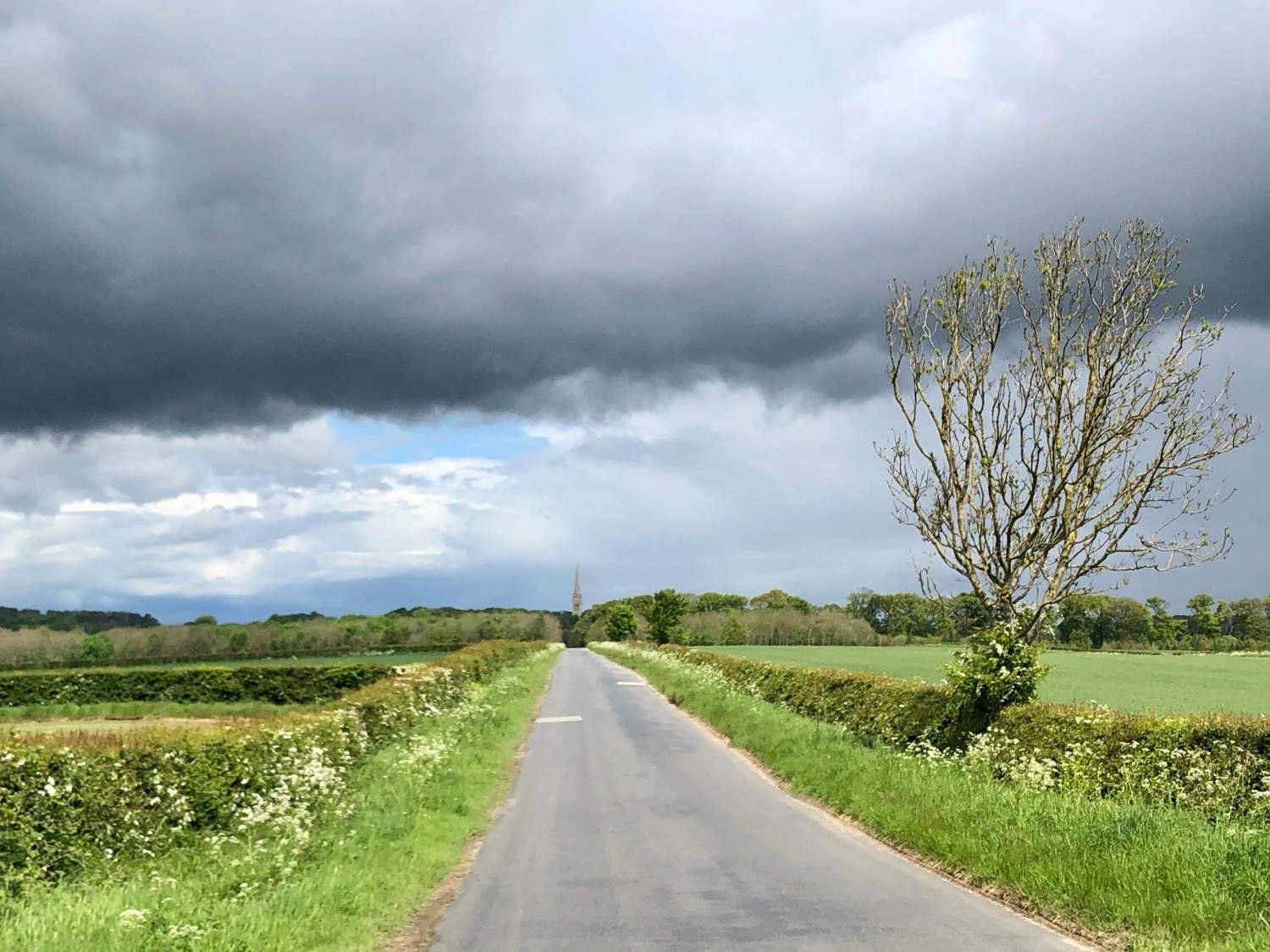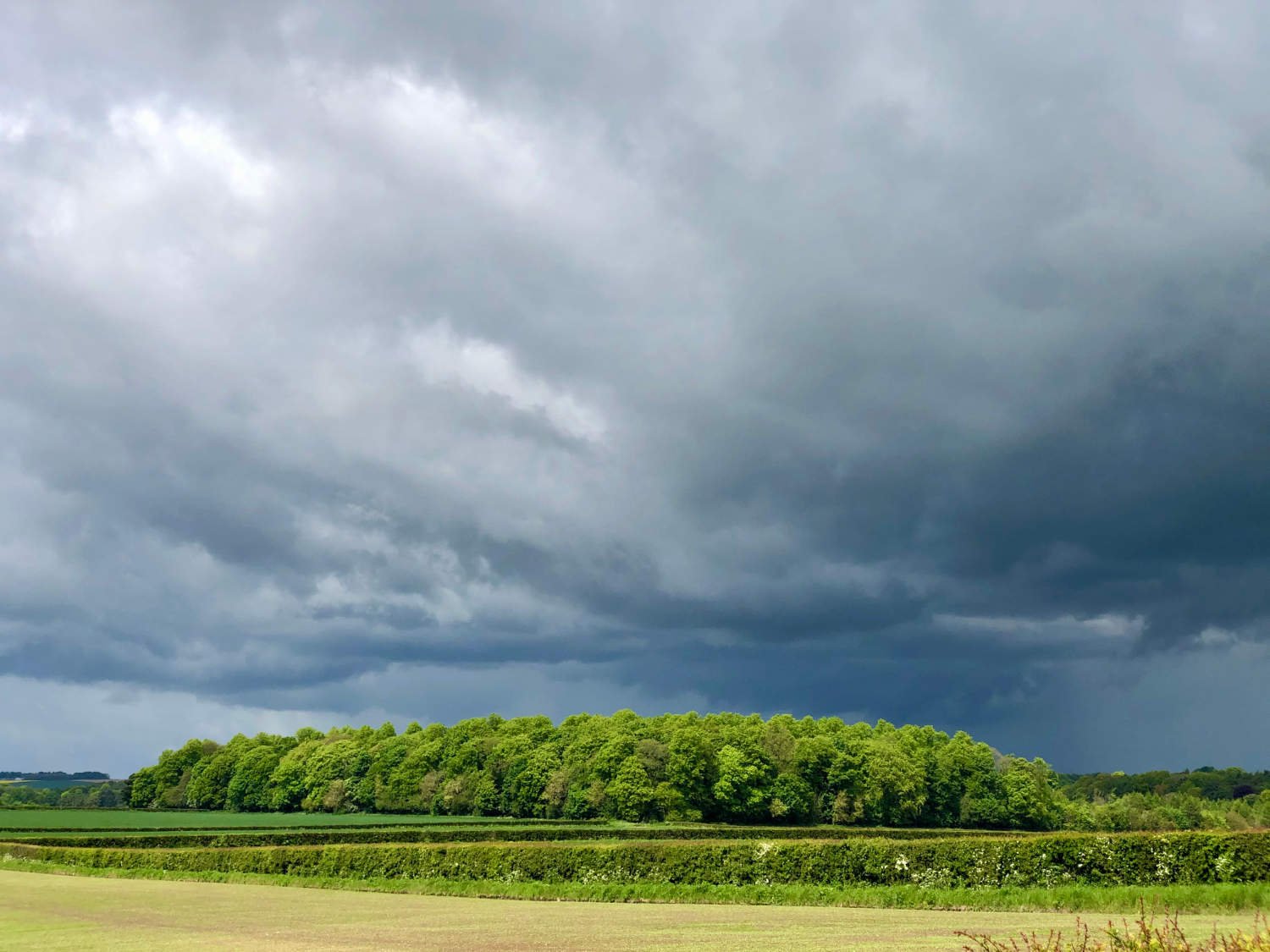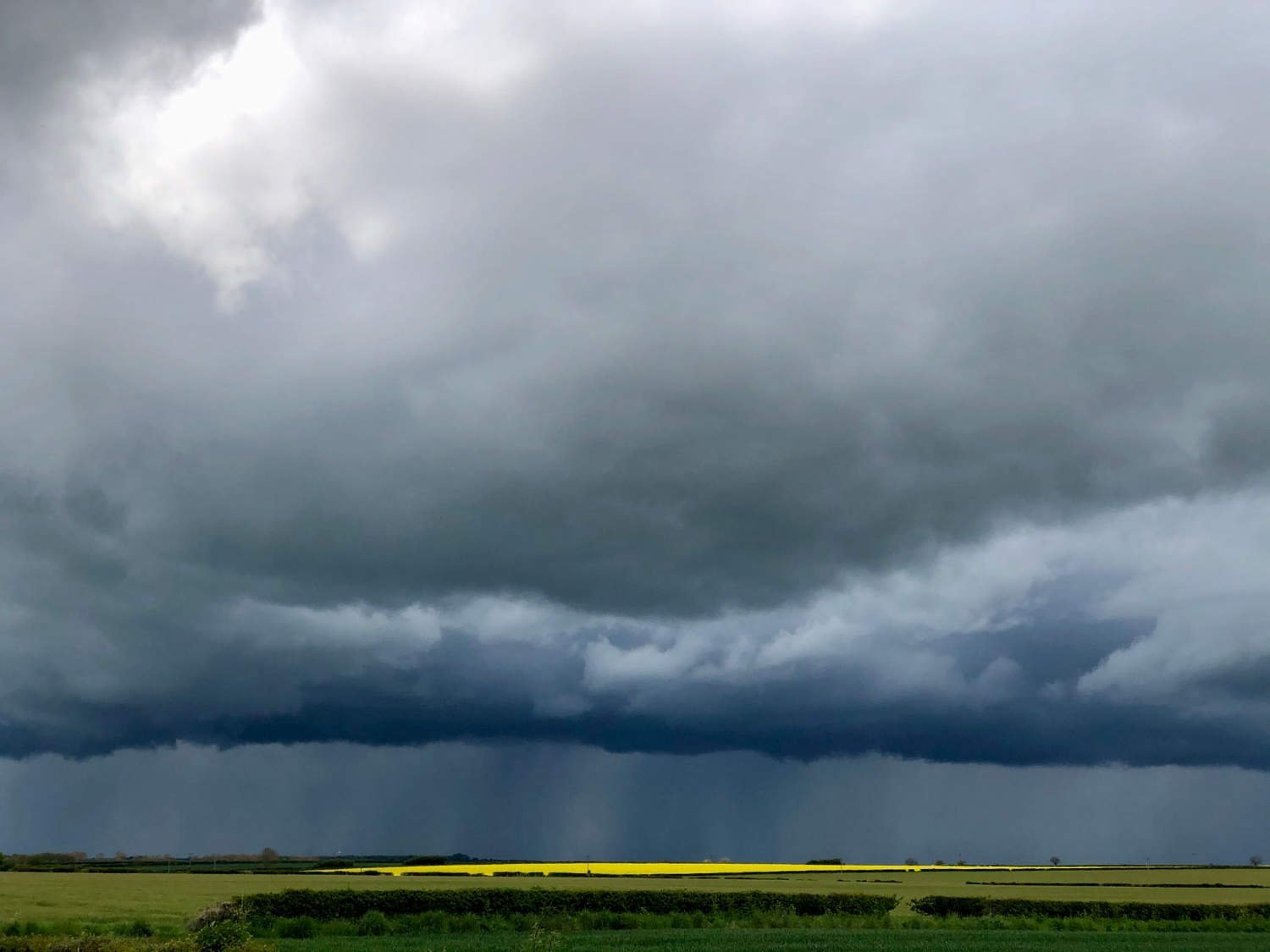NCN 1 Stage 9 Hull to Scarborough
Etton
Ride overview
To ride through a painting is a rare thing, but along Woldgate, there is just that opportunity. For lovers of David Hockney’s work, this is a dream ride; his woods, his hawthorns, his muddy lanes are all here. The route might look a long one for a touring day (with a loaded bike), but it is mainly flat with few hills. Should you not make Scarborough, finish the day in Bridlington.
For riders of a certain age, Bridlington will bring back happy? memories of holidays past; cold winds and sandy sandwiches, fish and chips wrapped in paper and boarding houses ruled by wannabe Headmistresses. There’s Beverley Minster, said to be the inspiration for Westminster Abbey’s west front, and a glorious ride over classic English chalkland scenery. Whatever the weather, this is a ride to savour as you head to England’s first ever seaside resort. .












Ride Practicalities
The route is generally well signed throughout as NCN 1, although in and around Hull and Scarborough, it’s signage is patchy. .
START/FINISH: Hull/Scarborough DISTANCE: 122km TOTAL ASCENT:812m TERRAIN AND SURFACES: Quiet country lanes with barely any traffic, once out of Hull. Some of the bridleways outside Hull are lumpy, so a ‘gravel’ bike will come into its own. That said, I ride a touring bike with 28mm tyres. After rain some of the smaller lanes can be very muddy RECOMMENDED CAFÈS/PUBS/ACCOMMODATION: Duffield: The Cosy Cow. Although we stayed and ate in places along the route, there is nowhere other than the Cosy Cow that we’d particularly recommend. Places remain for you to discover based on budget, mood and need NEARBY MAINLINE TRAIN SERVICES: Hull; The Museum Quarter, William Wilberforce’s House, The Aquarium, Beverley; The Minster, Bridlington, Scarborough PLACES TO VISIT; Hull; The Museum Quarter, William Wilberforce’s House, The Aquarium, Beverley; Minster, Burton Agnes; Burton Agnes Hall , Hull LINKS TO OTHER RIDES: NCN1 Stage 8, Stage 10
Ride notes
Hull requires perhaps more time than most cities if you’re to love it. The city has a rich past; a major whaling and fishing port, a chief wool exporter, a city of industry and mercantilism. Dig a little deeper and you’ll discover that Hull has been home to William Wilberforce, Mary Wollstonecraft, Amy Johnson (the first woman to fly solo to Australia), Philip Larkin, and Stevie Smith. Sir Tom Courtenay, Maureen Lipman and Ian Carmichael, are Hullians. Wilberforce’s house is a must-see, as is the futuristic Aquarium building. There are heritage pubs, and there is a vibrant music, art and theatre scene. Despite this, visually Hull is a hard place to like. The buildings are in the stolid mercantile Victorian style and thanks to the urban planners of the 1960s and 70’s the city is plagued by traffic. The historic centre, with its cobbled streets and Dickensian film-set houses, and its gem of a Minster, are all severely compromised by the incessant traffic rumbling noisily through the narrow streets, not to mention the horrendous ring road wrapping itself around the heart of the town.
Leaving Hull requires your full attention - the NCN signage is missing at key junctions, whether this is in part due to their policy of removing signage when the roads become busy, or whether they just ran out of signs matters not. Stick to the route as on the download.
Hull, the historic centre of cobbles, cars and Victorian mercantilism
The ride to Beverley is flat, through fields and beside fizzing electric sub stations. It makes for an eclectic combination. The riding is on rough farm tracks and again. Tune your ear to the warning beeps of your navigation device as there are many turns along the way.
Beverley is everything that Hull isn’t. The council have closed the centre to traffic, and the vernacular architecture is less grandiose and ostentatious. Its treasure is the Minster, a 1300 year old building whose frontage is remarkably similar to that of Westminster Abbey. It is said to be the most impressive church that is not a cathedral and it took 200 years to build - which makes the grand projects of our own times seem rather hurried.
Beverly Minster
The riding from Beverly to Bridlington is over the northernmost chalk-lands in the country, The Yorkshire Wolds. The chalk was laid down in the Cretaceous Era - a time ranging from 145 - 66 million years ago, during a period when the global climate was warmer than it is today. The Wolds were once a warm tropical sea and the chalk is essentially a mass of shells falling to the bottom of a warm tropical sea over millions of years and crushed by unimaginable forces into the soft rock of chalk. It is a landscape of soft rollling hills, where terracotta red roof tiles of quintessentially English cottages peep over hedges. Classic English trees - ash, oak, hawthorn, hazel and holly - crowd around huge giant fields of wheat and rape. As you ride into Bridlington, you ride alongside the Gypsey Race, Europe’s northernmost chalk stream.
Woldgate
Rarely do you cycle through a series of paintings. But as you ride along Woldgate towards Bridlington, you will be doing just that, for some of David Hockney’s most famous countryside scenes were painted along this road.
Those of a certain age might recognise ‘Brid’ as the type of place where mid-twentieth century childhood holidays were spent. If you are not of that era, you will get a taste of what a ‘classic’ English seaside resort looked like and you might well wonder how so many survived the experience for as long as they did; Boarding Houses run by rule-driven landladies, Fish and Chips still wrapped in paper rather than polystyrene, well-wrapped adults in deckchairs sitting on a windy beach, sand whipping off the said beach, rain. Bridlington is almost a ‘heritage experience’ and it’s non the poorer for that. If you’re in need of a short day, it is a good place to rest up.
'Brid'
There’s a delicious hill awaiting after Bridlington to take you back onto the Wolds, after which you roll through classic chalk land scenery. All the rough bits of the countryside have been removed by time and other than the sometimes very straight roads, there’s not a harsh line anywhere - hills are gently rounded, the valleys moulded into curvaceous shapes and rounded stands of beech trees grace the horizons. Fields are industrially large, farms resemble an out of town light industrial unit. Lanes are bordered with hedges, the verges are flower-filled. The sky is huge, the sea never very far away. It a very English landscape.
Red campion along a Wold's lane
Originally, one would have travelled to Scarborough to ‘take the waters’. People came from all over England, travelling on atrocious roads (you might be thinking having ridden over the Wolds that not much has changed in that regard), hoping that a stay will improve their health. The town grew and became England’s first seaside town; horse races took place on the beach and there was bathing in the sea - a novelty at that time. Such are the times in which we now live, that the ‘waters’ which were regarded as curative by so many for so long, have been shut down by The Health and Safety Police’. The town retains a lot of its former elegance and still makes for a pleasant end to a a lovely day’s riding.
Scarborough
Every route on this website has been carefully researched as well as ridden. However situations on the ground can change quickly. If you know of changes to this route, or cafes, pubs and the like which you think other cyclists need to know about, feel free to share your thoughts below.
If you enjoyed this guide, why not subscribe to the website so as not to miss other inspirational routes?
wheremywheelsgo.uk is a Feedspot UK Cycling top website






